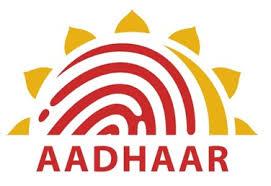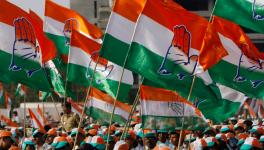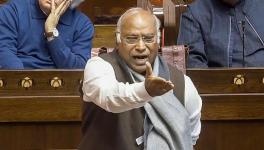Direct Cash Transfer - A Game Changer for Whom?
Direct Cash Transfer (DCT) scheme aims to transfer the difference between the market price and subsidized price directly to the beneficiary in the form of cash. UPA II government is accelerating the implementation of DCT keeping 2014 elections in mind.
The consensus or hope in the ruling circles is that direct cash transfer scheme which allures people with the idea of “Aapka paisa, aapke haath mein”, will be a game changer in the forthcoming elections. Government promises that once the “system is in place”, the scheme would be extended to essential commodities like food and fertilizers. In this period of high inflation, it is widely argued that a move to replace distribution of goods like food, kerosene etc., with cash transfer will only add to the burden of India's poor. While DCT is appreciable for scholarships, various pension schemes or unemployment wages, it cannot be a replacement for all subsidized public delivery systems.

DCT can not be a substitute for PDS
Neo-liberal economists, policy makers advocate for the withdrawal of State from public delivery systems (PDS). The goal is to eventually replace universal PDS and other forms of subsidies with direct cash transfer. The PDS is a vital source of economic security and nutritional support for millions of people. It should be expanded and consolidated, not dismantled. The State should redeem its promise of enactment of National Food Security Policy at the earliest. It is important to understand that cash transfers should compliment, but not substitute for the provision of public services such as health care, school education, water supply, basic amenities, and the PDS.
Unique Identification - AADHAR and Direct cash transfer
One of the main problems that are associated with DCT is to make AADHAR mandatory. As pointed out by experts, biometric identification for manual workers has a 20% margin of error since fingerprints of such workers are susceptible to change. So is the case with senior citizens. The difference between UID enrollment figures and the number of actual beneficiaries is suspected to be very large at least in the present. Moreover, duplicate or deliberate incorrect inclusions and forced exclusions from the AADHAR project, questions the very integrity of the UID database. Many human rights organizations raised valid concerns about the possible misuse of UID data by law enforcing agencies and its potential impact on the civil liberty rights. Before correcting these flaws and addressing these concerns, making AADHAR mandatory for critical programs like food subsidy would be catastrophic.
Access to banks and infrastructures in rural India
In a country like India, where the rural poor have little or no access to banks or knowledge of the banking system, money may not reach the desired ones. The possibility of exploitation is huge mainly in tribal regions and in villages where quasi-feudal systems still persist. In simpler terms, money might just get snatched away from the poor. Data shows only about a third of Indians have bank accounts. Enrolling all the beneficiaries into the banking system is a huge operational challenge which might take enormous amount of time. Rushing into DCT without a truthful analysis of the actual enrollment numbers and of the timeline will only contribute to the increased rate of starvation deaths and farmer suicides.
Patriarchal society and gender power equations
While responding to a question related to DCT, eminent economist Amartya Sen noted that, DCT may hurt girls and kids. In a society like India where patriarchal power structure still exists, the authority to take financial decisions is the prerogative of males who are considered as ”head of the family”. Cash can be easily used for wrong priorities like addictions. Even if that might not be the case, we have no way to believe that with the existing gender inequalities in place, resources will be equally divided in the family. Already there are enough empirical evidences to suggest that malnutrition among girl children and females is much higher than the boys and adult males
1 . We have every reason to believe that replacing direct distribution of food with cash transfer will worsen the malnutrition figures among girl children and women.
Forced participation of poor in unregulated open markets
In India, food inflation figures are high due to several reasons ranging from artificial shortages to agricultural crises to government policies. It is of no doubt that there will be a time lag for actual money to get reflected in the beneficiary account in case of inflation. Looking at the past experiences, we can easily assume that these time lags can be notoriously long. This is going to create an enormous damage to the nutritional intake of the urban and rural poor who literally live a hand to mouth existence. The poor eventually have to borrow money from local money sharks to buy food and fuel. By forcing poor to buy food from open markets (supermarkets in urban areas where kirana shops are becoming non-existent) at highly inflated prices, the government is pushing poor into an endless debt abyss.
Adverse Effects
There are so many adverse effects of DCT, like price rise of the essential goods and potential unemployment of government fair price shop employees which are not discussed in this article but are also of immense concern. The neo-liberal ideologues have been urging the government to withdraw from the social security measures in a timely manner and have been declaring that the government’s job is to just act as an enabler of conducive business environment. The Government of India happily echoes these sentiments. The very argument that public distribution of food is not effective is not valid. We have several successful models like one that exists in Kerala
2 and Tamil Nadu which has a highly efficient public distribution system for food, kerosene and even for essential drugs.
References
1. Kaur, I. P. and Kaur, S. A Comparison of Nutritional Profile and Prevalence of Anemia
among Rural Girls and Boys, Journal of Exercise Science and Physiotherapy, 2011, 7 (1), 11-18
2 K. P. Kannan, Declining Incidence of Rural Poverty in Kerala, Economic and Political Weekly, 1995, 30, 2651-2662
Disclaimer: The views expressed here are the author's personal views, and do not necessarily represent the views of Newsclick
Get the latest reports & analysis with people's perspective on Protests, movements & deep analytical videos, discussions of the current affairs in your Telegram app. Subscribe to NewsClick's Telegram channel & get Real-Time updates on stories, as they get published on our website.
























